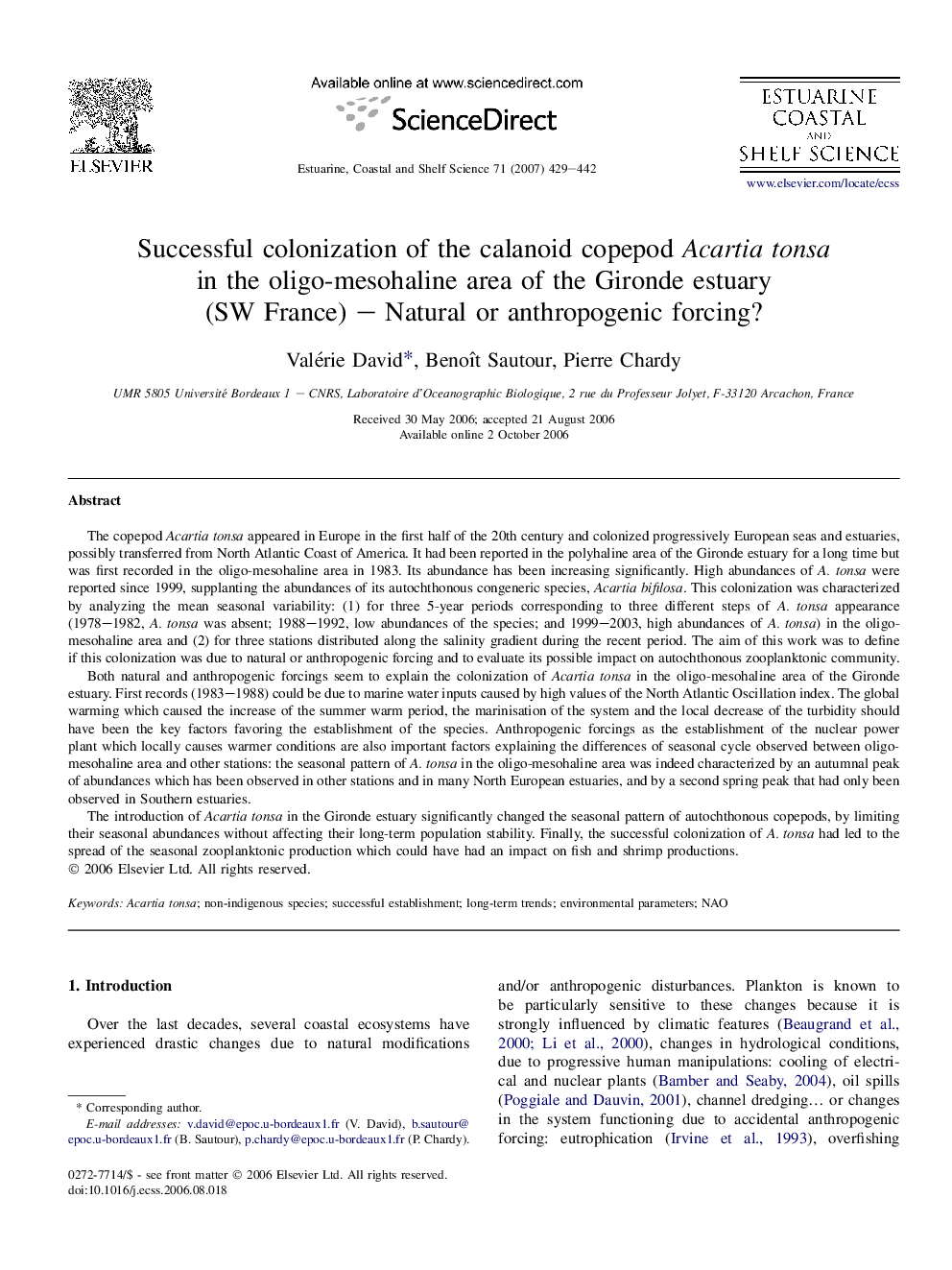| کد مقاله | کد نشریه | سال انتشار | مقاله انگلیسی | نسخه تمام متن |
|---|---|---|---|---|
| 4542422 | 1626706 | 2007 | 14 صفحه PDF | دانلود رایگان |

The copepod Acartia tonsa appeared in Europe in the first half of the 20th century and colonized progressively European seas and estuaries, possibly transferred from North Atlantic Coast of America. It had been reported in the polyhaline area of the Gironde estuary for a long time but was first recorded in the oligo-mesohaline area in 1983. Its abundance has been increasing significantly. High abundances of A. tonsa were reported since 1999, supplanting the abundances of its autochthonous congeneric species, Acartia bifilosa. This colonization was characterized by analyzing the mean seasonal variability: (1) for three 5-year periods corresponding to three different steps of A. tonsa appearance (1978–1982, A. tonsa was absent; 1988–1992, low abundances of the species; and 1999–2003, high abundances of A. tonsa) in the oligo-mesohaline area and (2) for three stations distributed along the salinity gradient during the recent period. The aim of this work was to define if this colonization was due to natural or anthropogenic forcing and to evaluate its possible impact on autochthonous zooplanktonic community.Both natural and anthropogenic forcings seem to explain the colonization of Acartia tonsa in the oligo-mesohaline area of the Gironde estuary. First records (1983–1988) could be due to marine water inputs caused by high values of the North Atlantic Oscillation index. The global warming which caused the increase of the summer warm period, the marinisation of the system and the local decrease of the turbidity should have been the key factors favoring the establishment of the species. Anthropogenic forcings as the establishment of the nuclear power plant which locally causes warmer conditions are also important factors explaining the differences of seasonal cycle observed between oligo-mesohaline area and other stations: the seasonal pattern of A. tonsa in the oligo-mesohaline area was indeed characterized by an autumnal peak of abundances which has been observed in other stations and in many North European estuaries, and by a second spring peak that had only been observed in Southern estuaries.The introduction of Acartia tonsa in the Gironde estuary significantly changed the seasonal pattern of autochthonous copepods, by limiting their seasonal abundances without affecting their long-term population stability. Finally, the successful colonization of A. tonsa had led to the spread of the seasonal zooplanktonic production which could have had an impact on fish and shrimp productions.
Journal: Estuarine, Coastal and Shelf Science - Volume 71, Issues 3–4, February 2007, Pages 429–442